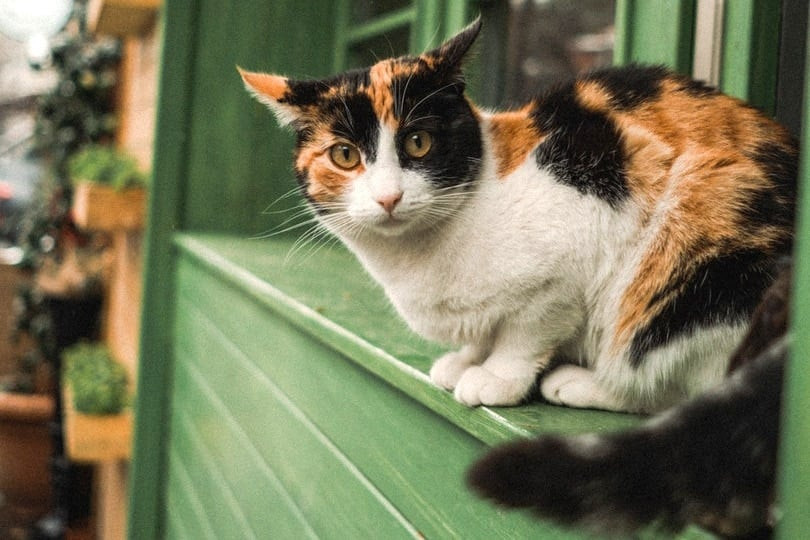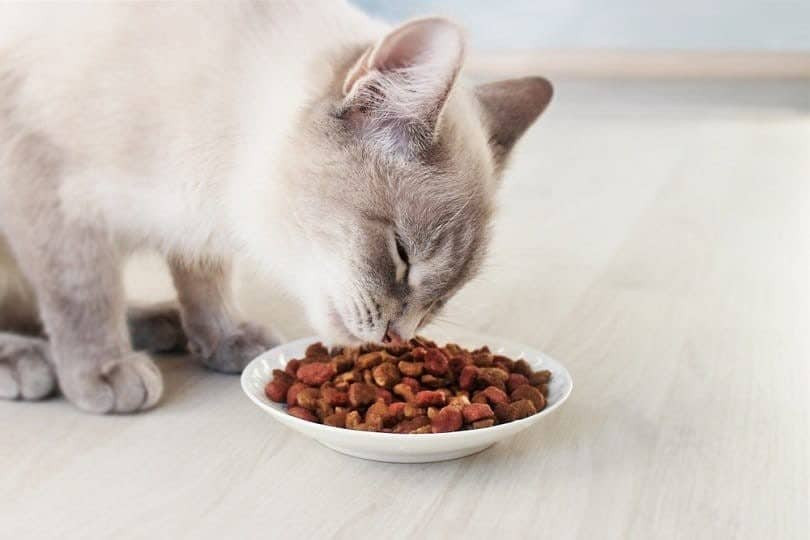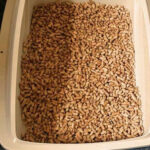Can Cats Eat Hash Browns? While a tiny nibble of hash browns might not be immediately harmful to your feline friend, it’s generally not a good idea to make it a regular part of their diet. This article, brought to you by solcat.net, dives into why hash browns aren’t ideal for cats, what foods are dangerous, and what constitutes a healthy diet for your furry companion. Learn more about optimal feline nutrition to keep your cat healthy and happy.
1. Can My Cat Eat Hash Browns?
It’s best not to feed your cat hash browns. While potatoes themselves aren’t inherently toxic to cats, hash browns are typically prepared in a way that can be harmful. A small bite might not cause severe issues, but regular consumption can lead to gastrointestinal distress.
Hash browns often contain ingredients that are bad for cats:
- High Salt Content: Too much salt can lead to sodium poisoning.
- Butter and Oil: Commonly fried in butter or oil, which can cause digestive issues.
- Seasonings: Garlic and onion powders, which are toxic to cats, might be added.
If your cat eats hash browns, watch for signs of gastrointestinal upset or lethargy. Contact your veterinarian immediately if you see any severe symptoms.
2. What Happens If a Cat Eats Hash Browns?
If a cat sneaks a bite of hash browns, there might be no immediate severe symptoms. However, here’s what could happen:
- Gastrointestinal Distress: Cats may experience vomiting, diarrhea, or abdominal pain due to the high fat and seasoning content.
- Dehydration: Excess salt can cause dehydration, which can be dangerous if not addressed.
- Lethargy: Your cat might appear tired or less active than usual.
Keep a close eye on your cat for the next 24 hours if they’ve eaten hash browns. Ensure they have access to fresh water and a comfortable place to rest.
3. Why Are Hash Browns Bad for Cats?
Hash browns pose several health risks to cats:
- High Sodium Levels:
- Health Concerns: Salt toxicity can lead to severe health problems, including vomiting, diarrhea, and even seizures.
- Recommended Intake: Cats need very little sodium in their diet, and hash browns far exceed what’s safe.
- Fats and Oils:
- Digestive Issues: Fats and oils can cause gastrointestinal upset, leading to vomiting and diarrhea.
- Weight Gain: High-fat foods contribute to obesity, which can cause several health issues, including diabetes and joint problems.
- Toxic Ingredients:
- Garlic and Onions: These common seasonings are toxic to cats and can damage red blood cells.
- Hidden Ingredients: Some hash browns contain additives or spices that are harmful to cats.
4. What Foods Should Cats Absolutely Avoid?
Knowing what not to feed your cat is just as important as knowing what they can eat. Here is a list of foods that are toxic or harmful to cats:
- Chocolate: Contains methylxanthines, which can cause vomiting, diarrhea, increased heart rate, and seizures. Dark chocolate is especially toxic.
- Onions and Garlic: These damage red blood cells and can cause anemia. All forms—powdered, raw, cooked, or dehydrated—are dangerous.
- Grapes and Raisins: These can cause kidney failure. The exact toxic substance is unknown, but they should be avoided entirely.
- Alcohol: Even small amounts can cause severe liver and brain damage.
- Caffeine: Like chocolate, it contains methylxanthines and can lead to restlessness, rapid breathing, heart palpitations, and muscle tremors.
- Dairy Products: Most cats are lactose intolerant and can experience digestive upset, including diarrhea and vomiting.
- Raw Dough: Can expand in the stomach, causing pain and potentially rupturing the stomach or intestines. Fermenting dough produces alcohol, which is toxic.
- Xylitol: An artificial sweetener found in sugar-free gums and candies, which can cause a rapid drop in blood sugar and liver failure.
- Bones: Cooked bones can splinter and cause choking or damage to the digestive tract.
- Avocado: Contains persin, which can cause vomiting and diarrhea in cats.
 Frightened cat on window jam
Frightened cat on window jam
5. What Is the Ideal Diet for a Cat?
A cat’s ideal diet should be high in protein, moderate in fats, and low in carbohydrates. Here are the essential components:
- Protein: Cats are obligate carnivores, meaning they need animal-based protein to survive. Protein supports muscle development, energy levels, and overall health.
- Fats: Healthy fats are essential for energy, hormone production, and nutrient absorption.
- Vitamins and Minerals: Cats need a range of vitamins and minerals, including Vitamin A, Vitamin D, and B vitamins. These are often included in high-quality commercial cat foods.
- Taurine: An essential amino acid that cats cannot produce on their own. It’s crucial for heart health, vision, and digestion. Taurine is typically added to commercial cat foods.
- Water: Hydration is critical for a cat’s health. Always provide fresh, clean water.
6. What Are Some Safe Human Foods to Give Cats in Moderation?
While commercial cat food should make up the bulk of your cat’s diet, here are a few human foods that are safe to offer in small amounts:
- Cooked Fish: Salmon, tuna, and other fish are rich in omega-3 fatty acids and protein. Ensure it is well-cooked and boneless.
- Cooked Chicken and Turkey: Lean protein sources that are easily digestible. Make sure they are boneless and skinless.
- Cooked Eggs: A good source of protein and easy to digest. Cook thoroughly to avoid salmonella risks.
- Steamed Vegetables: Broccoli, carrots, and green beans can provide essential vitamins and fiber. Steam them to make them easier to digest.
- Plain Yogurt: Contains probiotics that can support digestive health. Choose plain, unsweetened yogurt to avoid added sugars and artificial sweeteners.
 Siamese cat eating dry food from a bowl
Siamese cat eating dry food from a bowl
7. How to Read Cat Food Labels
Understanding cat food labels can help you make informed choices about your cat’s diet. Here are some key things to look for:
- Ingredient List: Ingredients are listed in descending order by weight. Look for named meat sources (e.g., chicken, beef) as the first ingredient.
- Guaranteed Analysis: This section provides percentages of crude protein, crude fat, crude fiber, and moisture.
- AAFCO Statement: The Association of American Feed Control Officials (AAFCO) statement confirms that the food provides complete and balanced nutrition for your cat’s life stage.
- Nutritional Adequacy Statement: Indicates whether the food is intended for all life stages, maintenance, growth, or reproduction.
- Feeding Guidelines: Provides recommendations on how much to feed your cat based on their weight and activity level.
8. Are There Any Benefits to Feeding Cats a Raw Food Diet?
Some cat owners advocate for raw food diets, believing they offer several benefits:
- Improved Digestion: Raw food is thought to be easier for cats to digest because it more closely mimics their natural diet.
- Shinier Coat: The high fat content in raw food can lead to a healthier, shinier coat.
- Increased Energy: Some owners report that their cats have more energy on a raw food diet.
- Better Dental Health: Chewing on raw bones (if included) can help clean teeth and reduce plaque buildup.
However, raw food diets also come with risks:
- Bacterial Contamination: Raw meat can contain harmful bacteria like Salmonella and E. coli, which can make your cat (and you) sick.
- Nutritional Imbalances: It can be challenging to ensure that a raw food diet is nutritionally balanced.
- Bone Hazards: Feeding raw bones can pose a choking hazard or cause damage to the digestive tract.
If you’re considering a raw food diet, consult with a veterinarian or feline nutritionist to ensure it’s safe and balanced for your cat.
9. How to Transition Your Cat to a New Food
Switching your cat to a new food should be done gradually to avoid digestive upset. Here’s a suggested transition plan:
- Days 1-2: Mix 25% new food with 75% old food.
- Days 3-4: Mix 50% new food with 50% old food.
- Days 5-6: Mix 75% new food with 25% old food.
- Day 7: Feed 100% new food.
Monitor your cat’s stool during the transition. If you notice any signs of digestive upset, slow down the transition or consult your veterinarian.
10. What to Do if Your Cat Is a Picky Eater
Some cats are notoriously picky eaters. Here are some tips to encourage your cat to eat:
- Warm the Food: Warming food slightly can enhance its aroma and make it more appealing.
- Add Flavor Enhancers: Sprinkle a small amount of tuna juice or chicken broth on the food.
- Try Different Textures: Experiment with different food textures (e.g., pate, chunks in gravy, dry kibble).
- Feed Small, Frequent Meals: Cats prefer to eat multiple small meals throughout the day.
- Create a Calm Environment: Feed your cat in a quiet, stress-free environment.
If your cat refuses to eat for more than 24 hours, consult your veterinarian.
5 Common Search Intents Related to “Can Cats Eat Hash Browns”
- Safety: Is it safe for cats to eat hash browns?
- Dietary Information: What nutrients do cats need in their diet, and do hash browns provide them?
- Side Effects: What are the potential side effects if a cat eats hash browns?
- Alternatives: What are some safe alternatives to hash browns that cats can eat?
- Toxic Foods: What other foods are toxic to cats that owners should avoid?
Conclusion
While a tiny bite of hash browns may not be immediately harmful, they’re not a suitable food for cats due to the high salt, fat, and potentially toxic seasonings. It’s essential to provide your feline friend with a balanced diet that meets their specific nutritional needs. Always consult with your veterinarian or a feline nutritionist for personalized dietary advice. For more information on cat nutrition and care, visit solcat.net.
Are you looking for more insights into your cat’s health and well-being? At solcat.net, we’re dedicated to providing you with reliable, up-to-date information and expert advice to help you provide the best possible care for your feline companion. Explore our articles, connect with our community, and discover everything you need to know to keep your cat happy and healthy.
Address: 950 Alaskan Way, Seattle, WA 98104, United States
Phone: +1 (206) 386-4000
Website: solcat.net
FAQ: Feeding Cats and Hash Browns
1. Can cats eat potatoes in any form?
While plain, cooked potatoes without any seasoning are not toxic, they offer little nutritional value to cats. It’s better to avoid feeding them potatoes altogether.
2. What are the symptoms of salt poisoning in cats?
Symptoms include vomiting, diarrhea, lethargy, decreased appetite, increased thirst and urination, tremors, seizures, and coma. If you suspect your cat has salt poisoning, contact your veterinarian immediately.
3. Is it safe for cats to drink milk?
Most cats are lactose intolerant and cannot properly digest milk. It can cause digestive upset, including diarrhea and vomiting. It’s best to avoid giving milk to cats.
4. What should I do if my cat accidentally eats something toxic?
Contact your veterinarian or the Pet Poison Helpline immediately. Provide as much information as possible about what your cat ingested and the quantity.
5. How much protein does a cat need in their diet?
Cats require a high-protein diet, with protein making up at least 30-40% of their daily intake. Protein supports muscle development, energy levels, and overall health.
6. Can cats eat sweet potatoes?
Yes, cooked sweet potatoes are safe for cats in small amounts. They are a good source of fiber and vitamins, but they should not be a significant part of their diet.
7. Are there any human foods that are toxic to cats in very small amounts?
Yes, foods like onions, garlic, chocolate, and grapes are toxic even in small amounts and should be avoided entirely.
8. How can I tell if my cat is getting enough water?
Signs of adequate hydration include normal skin elasticity, moist gums, and regular urination. Ensure your cat always has access to fresh water and consider adding wet food to their diet to increase moisture intake.
9. What are the best sources of taurine for cats?
Taurine is primarily found in animal-based proteins. Good sources include meat, fish, and poultry. Most commercial cat foods are supplemented with taurine to ensure adequate intake.
10. How often should I feed my cat?
Most adult cats do well with two meals a day. Kittens may require more frequent feedings to support their growth and development. Consult with your veterinarian for specific feeding recommendations.

